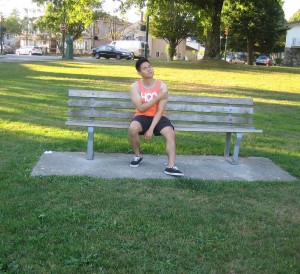A dislocated shoulder is considered as a painful and traumatic injury that entails immediate medical care. In most cases, a rehabilitation program is required in order to avoid recurring injury to the shoulder.
What are the symptoms?
When it comes to a dislocated shoulder, the injury is usually caused by a fall onto an extended arm, direct force on the shoulder or a twisting force. Abrupt harsh pain is felt at the time the injury was sustained that can be accompanied by swelling and then bruising later on develops. The individual will feel the shoulder pop out of the joint and the affected side often appears different or lower if compared to the uninjured side.
The individual will hold the injured arm close to the body and avoids to move or turn it outwards. Numbness, pins and needles sensation or discoloration can occur through the arm up to the hand if there is damage to a nerve or blood vessel.

Treatment
Prompt treatment for a dislocated shoulder involves two phases. The first phase is to protect the shoulder joint and prevent further injury and the second phase is to seek immediate medical care as soon as possible.
First aid care
Do not attempt to move the affected shoulder joint. You have to immobilize it using a sling if possible to protect it from further injury. If you want to learn more on how to effectively perform immobilization, register for a first aid course. (Read here for more information about the courses).
With an ice pack, apply it over the affected area to reduce swelling and pain. Just remember not to apply the ice pack directly on bare skin. It must be wrapped in a clean towel or cloth before application. The application is usually 10-15 minutes every hour and the frequency is reduced as needed.
Reduction
Reduction is a procedure in which the dislocated humerus is positioned back into the joint. Only a healthcare professional should perform this procedure as soon as possible. Preferably, an X-ray is taken before the procedure to rule out any possible fractures. If not possible, an X-ray taken after reduction is required.
In case reduction is difficult, it would require the use of anesthetic. In a study conducted, surgical reduction is suitable for young active adults below 30 years old due to the low rate of recurrence and the impact on the quality of life is generally better.
Immobilization
Essentially, the shoulder is immobilized under a sling with the arm across the body until the damaged tissues have healed. A rehabilitation program is required in order to restore strength and mobility.
Exercises
After the phase of initial immobilization, exercises that will steadily increase the range of movement without triggering pain must be started. The rotator cuff muscles must be strengthened to prevent recurrence.
Surgery
In some cases of dislocated shoulder, surgery is required if the shoulder is dislocated regularly or if any of the bones are fractured. Take note that surgery is oftentimes needed after a dislocated shoulder if there is extensive damage to the tendons, muscles, nerves, blood vessels or the labrum.
